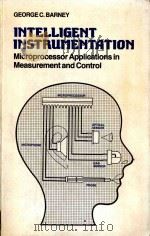《data networks second edition P556》
| 作者 | 编者 |
|---|---|
| 出版 | 未查询到或未知 |
| 参考页数 | |
| 出版时间 | 没有确切时间的资料 目录预览 |
| ISBN号 | 无 — 求助条款 |
| PDF编号 | 820576328(仅供预览,未存储实际文件) |
| 求助格式 | 扫描PDF(若分多册发行,每次仅能受理1册) |
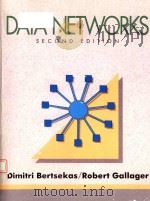
1INTRODUCTION AND LAYERED NETWORK ARCHITECTURE1
1.1Historical Overview1
1.1.1 Technological and Economic Background5
1.1.2 Communication Technology6
1.1.3 Applications of Data Networks7
1.2Messages and Switching9
1.2.1 Messages and Packets9
1.2.2 Sessions11
1.2.3 Circuit Switching and Store-and-Forward Switching14
1.3Layering17
1.3.1 The Physical Layer20
1.3.2The Data Link Control Layer23
The MAC sublayer24
1.3.3 The Network Layer25
The Internet sublayer28
1.3.4 The Transport Layer29
1.3.5 The Session Layer30
1.3.6 The Presentation Layer31
1.3.7 The Application Layer31
1.4A Simple Distributed Algorithm Problem32
Notes and Suggested Reading35
Problems35
2POINT-TO-POINT PROTOCOLS AND LINKS37
2.1 Introduction37
2.2The Physical Layer:Channels and Modems40
2.2.1 Filtering41
2.2.2 Frequency Response43
2.2.3 The Sampling Theorem46
2.2.4 Bandpass Channels47
2.2.5 Modulation48
2.2.6 Frequency-and Time-Division Multiplexing52
2.2.7 Other Channel Impairments53
2.2.8 Digital Channels53
ISDN54
2.2.9 Propagation Media for Physical Channels56
2.3Error Detection57
2.3.1 Single Parity Checks58
2.3.2 Horizontal and Vertical Parity Checks,58
2.3.3 Parity Check Codes59
2.3.4 Cyclic Redundancy Checks61
2.4ARQ:Retransmission Strategies64
2.4.1Stop-and-Wait ARQ66
Correctness of stop and wait69
2.4.2 Go Back n ARQ72
Rules followed by transmitter and receiver in go back n74
Correctness of go back n76
Go back n with modulus m>n78
Efficiency of go back n implementations80
2.4.3Selective Repeat ARQ81
2.4.4 ARPANET ARQ84
2.5Framing86
2.5.1 Character-Based Framing86
2.5.2 Bit-Oriented Framing:Flags88
2.5.3 Length Fields90
2.5.4 Framing with Errors92
2.5.5 Maximum Frame Size93
Variable frame length93
Fixed frame length97
2.6Standard DLCs97
2.7Initialization and Disconnect for ARQ Protocols103
2.7.1 Initialization in the Presence of Link Failures103
2.7.2 Master-Slave Protocol for Link Initialization104
2.7.3 A Balanced Protocol for Link Initialization107
2.7.4 Link Initialization in the Presence of Node Failures109
2.8Point-to-Point Protocols at the Network Layer110
2.8.1Session Identification and Addressing111
Session identification in TYMNET112
Session identification in the Codex networks113
2.8.2Packet Numbering Window Flow Control and Error Recove114
Error recovery115
Flow control116
Error recovery at the transport layer versus the network layer117
2.8.3 The X.25 Network Layer Standard118
2.8.4 The Internet Protocol120
2.9The Transport Layer123
2.9.1 Transport Layer Standards123
2.9.2 Addressing and Multiplexing in TCP124
2.9.3 Error Recovery in TCP125
2.9.4 Flow Control in TCP/IP127
2.9.5 TP Class 4128
2.10 Broadband ISDN and the Asynchronous Transfer Mode128
2.10.1 Asynchronous Transfer Mode(ATM)132
2.10.2 The Adaptation Layer135
Class 3(connection-oriented)traffic136
Class 4(connectionless)traffic137
Class 1 and 2 traffic137
2.10.3 Congestion138
Summary139
Notes,Sources,and Suggested Reading140
Problems141
3DELAY MODELS IN DATA NETWORKS149
3.1Introduction149
3.1.1 Multiplexing of Traffic on a Communication Link150
3.2Queueing Models:Little’s Theorem152
3.2.1 Little’s Theorem152
3.2.2 Probabilistic Form of Little’s Theorem154
3.2.3 Applications of Little’s Theorem157
3.3The M/M/1 Queueing System162
3.3.1 Main Results164
Arrival statistics—the Poisson process164
Service statistics165
Markov chain formulation166
Derivation of the stationary distribution167
3.3.2 Occupancy Distribution upon Arrival171
3.3.3 Occupancy Distribution upon Departure173
3.4The M/M/m,M/M/∞,M/M/m/m,and Other Markov Systems173
3.4.1 M/M/m:The m-Server Case174
3.4.2 M/M/∞:The Infinite-Server Case177
3.4.3 M/M/m/m:The m-Server Loss System178
3.4.4 Multidimensional Markov Chains:Applications in Circuit Switching180
Truncation of independent single-class systems182
Blocking probabilities for circuit switching systems185
3.5The M/G/1 System186
3.5.1 M/G/1 Queues with Vacations192
3.5.2 Reservations and Polling195
Single-user system196
Multi-user system198
Limited service systems201
3.5.3 Priority Queueing203
Nonpreemptive priority203
Preemptive resume priority205
3.5.4 An Upper Bound for the G/G/1 System206
3.6Networks of Transmission Lines209
3.6.1 The Kleinrock Independence Approximation211
3.7 Time Reversibility—Burke’s Theorem214
3.8Networks of Queues—Jackson’s Theorem221
Heuristic explanation of Jackson’s Theorem227
3.8.1Extensions of Jackson’s Theorem229
State-dependent service rates229
Multiple classes of customers230
3.8.2 Closed Queueing Networks233
3.8.3 Computational Aspects—Mean Value Analysis238
Summary240
Notes,Sources,and Suggested Reading241
Problems242
Appendix A:Review of Markov Chain Theory259
3A.1Discrete-Time Markov Chains259
3A.2 Detailed Balance Equations261
3A.3 Partial Balance Equations262
3A.4 Continuous-Time Markov Chains262
3A.5 Drift and Stability264
Appendix B:Summary of Results265
4MULTIACCESS COMMUNICATION271
4.1Introduction271
4.1.1 Satellite Channels273
4.1.2 Multidrop Telephone Lines274
4.1.3 Multitapped Bus274
4.1.4 Packet Radio Networks275
4.2Slotted Multiaccess and the Aloha System275
4.2.1Idealized Slotted Multiaccess Model275
Discussion of assumptions276
4.2.2 Slotted Aloha277
4.2.3 Stabilized Slotted Aloha282
Stability and maximum throughput282
Pseudo-Bayesian algorithm283
Approximate delay analysis284
Binary exponential backoff286
4.2.4 Unslotted Aloha287
4.3Splitting Algorithms289
4.3.1 Tree Algorithms290
Improvements to the tree algorithm292
Variants of the tree algorithm293
4.3.2 First-Come First-Serve Splitting Algorithms293
Analysis of FCFS splitting algorithm297
Improvements in the FCFS splitting algorithm301
Practical details302
Last-come first-serve(LCFS)splitting algorithm302
Delayed feedback303
Round-robin splitting304
4.4Carrier Sensing304
4.4.1 CSMA Slotted Aloha305
4.4.2 Pseudo-Bayesian Stabilization for CSMA Aloha307
4.4.3 CSMA Unslotted Aloha309
4.4.4 FCFS Splitting Algorithm for CSMA310
4.5Multiaccess Reservations312
4.5.1 Satellite Reservation Systems313
4.5.2 Local Area Networks:CSMA/CD and Ethernet317
Slotted CSMA/CD317
Unslotted CSMA/CD318
The IEEE 802 standards320
4.5.3 Local Area Networks:Token Rings320
IEEE 802.5 token ring standard323
Expected delay for- token rings324
FDDI326
Slotted rings and register insertion rings330
4.5.4Local Area Networks:Token Buses and Polling331
IEEE 802.4 token bus standard332
Implicit tokens:CSMA/CA333
4.5.5 High-Speed Local Area Networks333
Distributed queue dual bus(IEEE 802.6)335
Expressnet339
Homenets341
4.5.6 Generalized Polling and Splitting Algorithms342
4.6Packet Radio Networks344
4.6.1 TDM for Packet Radio Nets346
4.6.2 Collision Resolution for Packet Radio Nets347
4.6.3 Transmission Radii for Packet Radio349
4.6.4 Carrier Sensing and Busy Tones350
Summary351
Notes,Sources,and Suggested Reading352
Problems353
5ROUTING IN DATA NETWORKS363
5.1Introduction363
5.1.1 Main Issues in Routing365
5.1.2 Wide-Area Network Routing:An Overview367
Flooding and broadcasting368
Shortest path routing370
Optimal routing372
Hot potato(deflection)routing schemes372
Cut-through routing373
ARPANET:An example of datagram routing374
TYMNET:An example of virtual circuit routing376
Routing in SNA378
Routing in circuit switching networks379
5.1.3 Interconnected Network Routing:An Overview379
Bridged local area networks382
Spanning tree routing in bridged local area networks383
Source routing in bridged local area networks385
5.2Network Algorithms and Shortest Path Routing387
5.2.1 Undirected Graphs387
5.2.2 Minimum Weight Spanning Trees390
5.2.3 Shortest Path Algorithms393
The Bellman-Ford algorithm396
Bellman’s equation and shortest path construction399
Dijkstra’s algorithm401
The Floyd-Warshall algorithm403
5.2.4 Distributed Asynchronous Bellman-Ford Algorithm404
5.2.5Stability of Adaptive Shortest Path Routing Algorithms410
Stability issues in datagram networks410
Stability issues in virtual circuit networks414
5.3Broadcasting Routing Information:Coping with Link Failures418
5.3.1 Flooding:The ARPANET Algorithm420
5.3.2 Flooding without Periodic Updates422
5.3.3 Broadcast without Sequence Numbers425
5.4Flow Models,Optimal Routing,and Topological Design433
5.4.1 Overview of Topological Design Problems437
5.4.2 Subnet Design Problem439
Capacity assignment problem439
Heuristic methods for capacity assignment442
Network reliability issues445
Spanning tree topology design447
5.4.3 Local Access Network Design Problem448
5.5Characterization of Optimal Routing451
5.6Feasible Direction Methods for Optimal Routing455
5.6.1 The Frank-Wolfe(Flow Deviation)Method458
5.7Projection Methods for Optimal Routing464
5.7.1 Unconstrained Nonlinear Optimization465
5.7.2 Nonlinear Optimization over the Positive Orthant467
5.7.3 Application to Optimal Routing468
5.8 Routing in the Codex Network476
Summary477
Notes,Sources,and Suggested Reading478
Problems479
6FLOW CONTROL493
6.1Introduction493
6.1.1 Means of Flow Control494
6.1.2 Main Objectives of Flow Control496
Limiting delay and buffer overflow496
Fairness498
6.2Window Flow Control500
6.2.1End-to-End Windows501
Limitations of end-to-end windows502
6.2.2 Node-by-Node Windows for Virtual Circuits506
6.2.3 The Isarithmic Method508
6.2.4 Window Flow Control at Higher Layers508
6.2.5 Dynamic Window Size Adjustment510
6.3Rate Control Schemes510
Queueing analysis of the leaky bucket scheme513
6.4Overview of Flow Control in Practice515
Flow control in the ARPANET515
Flow control in the TYMNET517
Flow control in SNA517
Flow control in a Codex network518
Flow control in the PARIS network518
Flow control in X.25519
6.5Rate Adjustment Algorithms519
6.5.1 Combined Optimal Routing and Flow Control519
6.5.2 Max-Min Flow Control524
Summary530
Notes,Sources,and Suggested Reading530
Problems531
REFERENCES537
INDEX552
《data networks second edition P556》由于是年代较久的资料都绝版了,几乎不可能购买到实物。如果大家为了学习确实需要,可向博主求助其电子版PDF文件。对合法合规的求助,我会当即受理并将下载地址发送给你。
高度相关资料
-

- BUSINESS DATA COMMUNICATIONS SECOND EDITION
- 1994 PRENTICE HALL
-
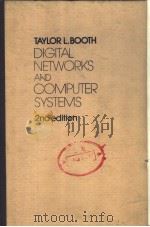
- DIGITAL NETWORKS AND COMPUTER SYSTEMS SECOND EDITION
- JOHN WILLEY & NEW YORK
-
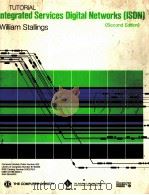
- TUTORIAL INTEGRATED SERIVICES DIGITAL NETWORKS(ISDN) SECOND EDITION
- 1988 IEEE COMPUTER SOCIETY PRESS
-

- Outliers in statistical data Second Edition
- 1984 Wiley
-
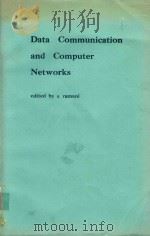
- DATA COMMUNICATION AND COMPUTER NETWORKS
- 1981 NORTH-HOLLAND PUBLISHING COMPANY
-
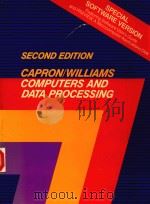
- SECOND EDITION CAPRONIWILLIAMS COMPUTERS AND DATA PROCESSING
- 1986 COPYRIGHT
-

- CLINICAL PATHOLOGY DATA SECOND EDITION
- 1957 BLACKWELL SCIENTIFIC PUBLICATIONS
-

- DATA ANALYSIS FOR DATA BASE DESIGN SECOND EDITION
- 1989 EDWARD ARNOLD
-

- DATA AND COMPUTER COMMUNICATIONS SECOND EDITION
- 1988 MACMILLAN PUBLISHING COMPANY
-

- BIOLOGY DATA BOOK SECOND EDITION VOLUME III
- 1974 EXPERIMENTAL BIOLOGY
提示:百度云已更名为百度网盘(百度盘),天翼云盘、微盘下载地址……暂未提供。➥ PDF文字可复制化或转WORD

